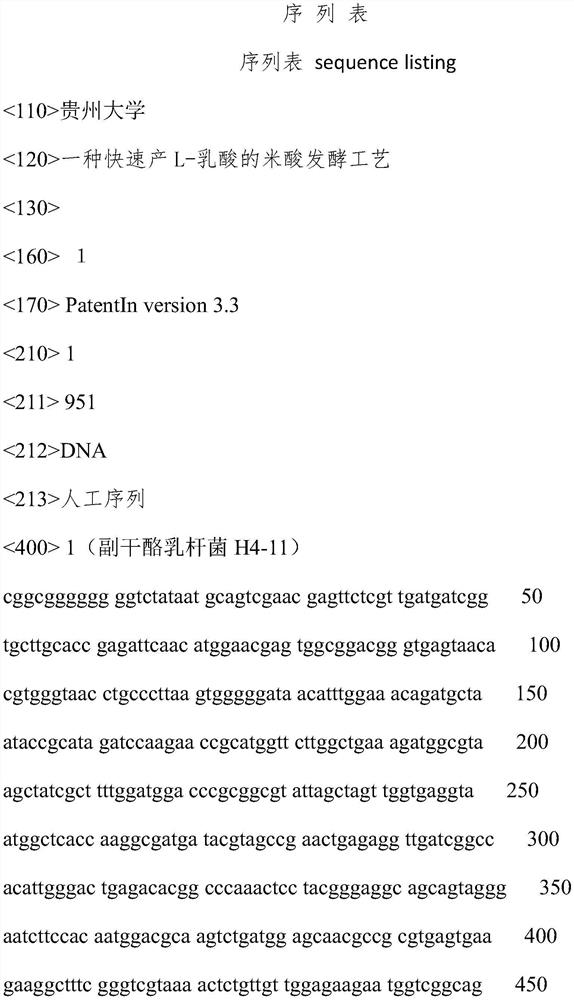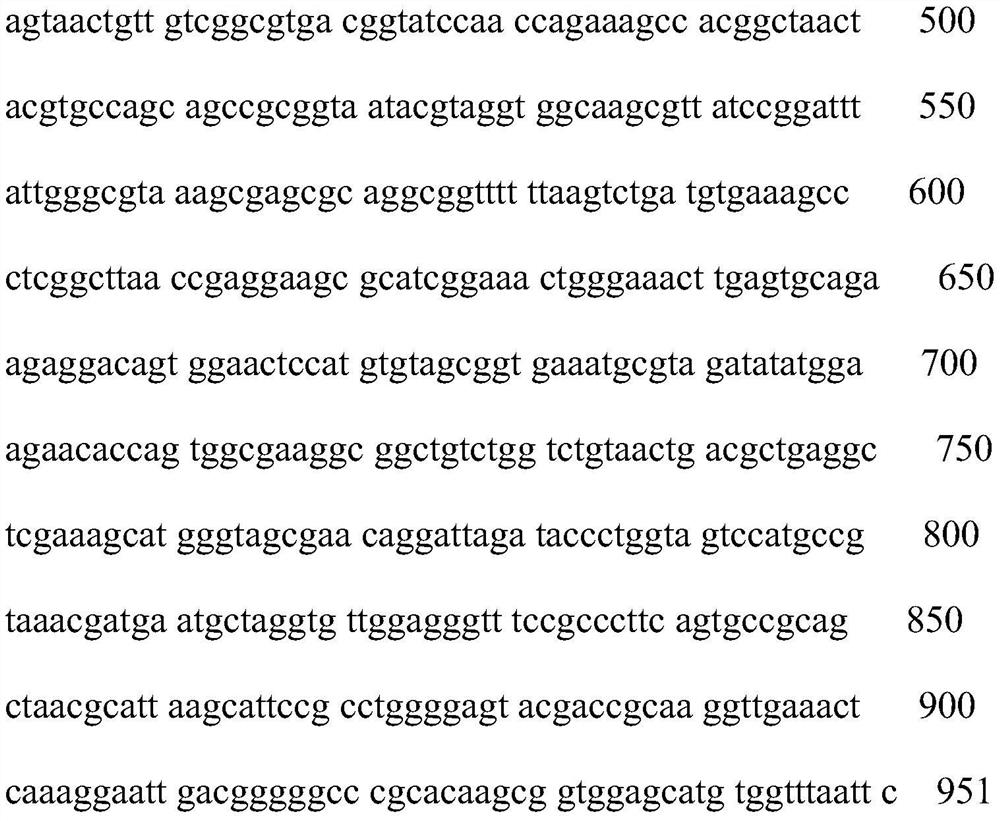A Rice Acid Fermentation Process for Quickly Producing L-Lactic Acid and Its Special Bacteria
A fermentation process and special bacteria technology, applied in the direction of fermentation, bacteria, and microorganism-based methods, can solve the problems of sour soup with mixed flavor and acid, low L-lactic acid content, poor taste and flavor, etc., and achieve good antioxidant properties, Strong performance, good taste and flavor effect
- Summary
- Abstract
- Description
- Claims
- Application Information
AI Technical Summary
Problems solved by technology
Method used
Image
Examples
Embodiment 1
[0031] A rice acid fermentation process for rapidly producing L-lactic acid, comprising the following processes:
[0032] (1) Raw material pretreatment: the glutinous rice is pulverized at high speed, mixed, and passed through an 80-mesh sieve twice to make rice flour;
[0033] (2) Boiling: mix rice flour and water, the content of rice flour after mixing is 8%, heat to boil, and stir while heating;
[0034] (3) Gelatinization: put the boiled rice soup into a water bath to gelatinize, and stir while gelatinizing; to prevent the gelatinization liquid from deteriorating due to uneven gelatinization; the gelatinization time is 30min, and the gelatinization temperature is 60℃;
[0035] (4) Liquefaction: add 1.0% high-temperature α-amylase by mass to the gelatinized rice soup for liquefaction, the liquefaction time is 30min, and the liquefaction temperature is 95°C;
[0036] (5) Sterilization: pasteurized at 95°C for 20 minutes;
[0037] (6) Inoculation: when the rice soup is cool...
Embodiment 2
[0040] A rice acid fermentation process for rapidly producing L-lactic acid, comprising the following processes:
[0041] (1) Raw material pretreatment: the selenium rice is pulverized at high speed, mixed, and passed through an 80-mesh sieve twice to make rice flour;
[0042] (2) Boiling: mixing rice flour and water, the content of rice flour after mixing is 0.5%, heating and boiling, stirring while heating;
[0043] (3) Gelatinization: put the boiled rice soup into a water bath to gelatinize, and stir while gelatinizing; to prevent the gelatinization liquid from deteriorating due to uneven gelatinization; the gelatinization time is 30min, and the gelatinization temperature is 60℃;
[0044] (4) Liquefaction: add 1.0% high-temperature α-amylase by mass to the gelatinized rice soup for liquefaction, the liquefaction time is 30min, and the liquefaction temperature is 95°C;
[0045] (5) Saccharification: add 0.02% saccharification enzyme by mass to the liquefied rice soup, the s...
Embodiment 3
[0050] A rice acid fermentation process for rapidly producing L-lactic acid, comprising the following processes:
[0051] (1) Raw material pretreatment: the glutinous rice is pulverized at high speed, mixed, and passed through a 100-mesh sieve twice to make rice flour;
[0052] (2) Boiling: mixing rice flour and water, the content of rice flour after mixing is 4.0%, heating and boiling, stirring while heating;
[0053] (3) Gelatinization: put the boiled rice soup into a water bath to gelatinize, and stir while gelatinizing; to prevent the gelatinization liquid from deteriorating locally due to uneven gelatinization; the gelatinization time is 40min, and the gelatinization temperature is 50℃;
[0054] (4) Liquefaction: add 1.0% of its mass of high-temperature α-amylase to the gelatinized rice soup for liquefaction, the liquefaction time is 40min, and the liquefaction temperature is 85°C;
[0055] (5) Saccharification: add 0.03% saccharification enzyme by mass to the liquefied ...
PUM
 Login to View More
Login to View More Abstract
Description
Claims
Application Information
 Login to View More
Login to View More - R&D
- Intellectual Property
- Life Sciences
- Materials
- Tech Scout
- Unparalleled Data Quality
- Higher Quality Content
- 60% Fewer Hallucinations
Browse by: Latest US Patents, China's latest patents, Technical Efficacy Thesaurus, Application Domain, Technology Topic, Popular Technical Reports.
© 2025 PatSnap. All rights reserved.Legal|Privacy policy|Modern Slavery Act Transparency Statement|Sitemap|About US| Contact US: help@patsnap.com



